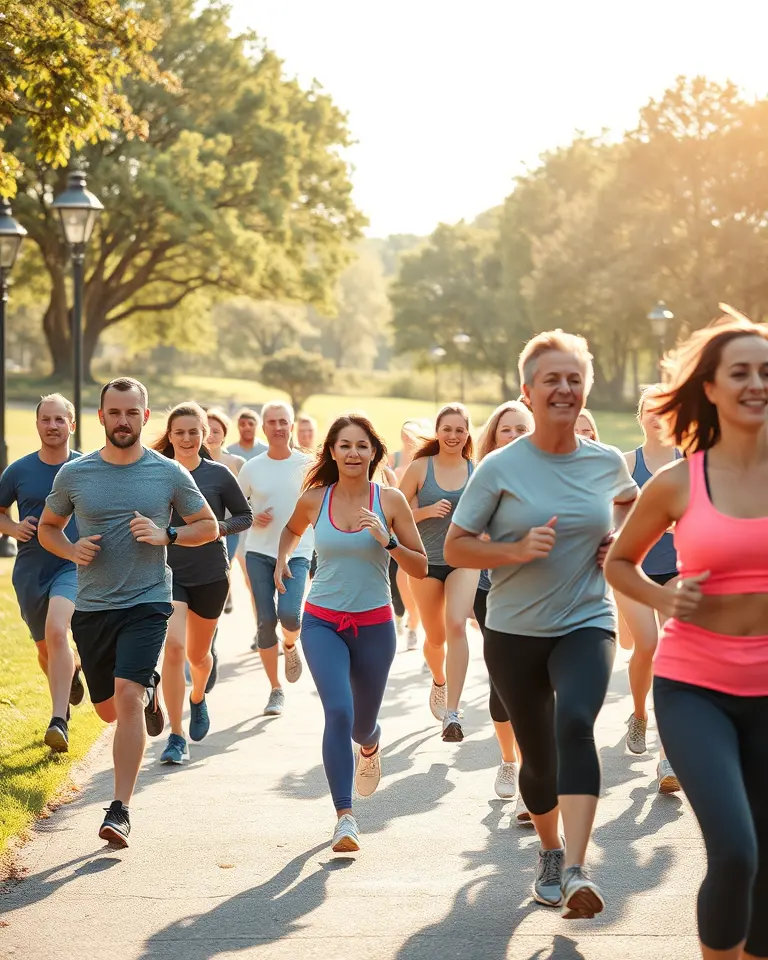The Intertwined Web of Health, Fitness, and Social Well-being
Recent research is increasingly highlighting the profound impact of social factors on our health and fitness. It’s becoming clear that our well-being is not solely determined by individual choices, like diet and exercise, but also by the social environments we inhabit. From the quality of our relationships to the resources available in our communities, social factors play a crucial role in shaping our overall health outcomes. These findings underscore the importance of adopting a holistic approach to health, one that considers the complex interplay between individual and societal elements.
Social Determinants of Health: Beyond Individual Choices
The conditions in which people are born, live, learn, work, play, worship, and age significantly affect their health. These conditions are known as the social determinants of health (SDOH). They encompass various factors that can be grouped into five main domains:
- Economic Stability: Factors like income, employment, and the presence of financial resources.
- Education Access and Quality: Encompasses education levels, literacy, and access to resources for learning.
- Health Care Access and Quality: Includes access to healthcare services, insurance, and quality of care.
- Neighborhood and Built Environment: Considers the safety, housing, transportation, and access to healthy resources in communities.
- Social and Community Context: Relates to social support networks, community engagement, discrimination, and violence.
These SDOH have a significant impact on health, well-being, and quality of life, and contribute to health disparities and inequities. For instance, individuals lacking access to grocery stores with healthy food options are more likely to have poor nutrition, increasing their risk of chronic conditions such as heart disease, diabetes, and obesity. Simply promoting healthy choices won’t be enough to eliminate these disparities. Instead, public health organizations and community partners need to work together to improve the conditions where people live.
The Power of Social Connections: A Foundation for Health
Strong social connections are proving to be as vital to our health as good diet and exercise. A landmark study has shown that the quality of someone’s relationships is a greater predictor of early death than obesity and physical inactivity, and on par with smoking and alcohol consumption. Social support can act as a buffer against stress, boost the immune system, and promote better mental and physical health. Conversely, social isolation and loneliness are linked to numerous health risks, including:
- Higher blood pressure
- Heart disease and stroke
- Obesity
- A weakened immune system
- Anxiety and depression
- Cognitive decline and dementia
- Increased risk of premature death
These findings highlight the critical need to cultivate and maintain strong social bonds throughout our lives.
The Role of Community in Fitness
Community plays a vital role in fostering physical activity and overall well-being. Being part of a fitness community can provide a sense of belonging, motivation, and accountability. Whether it’s a gym, a sports club, or an online group, shared goals and camaraderie can enhance the enjoyment of exercise and improve consistency in workout routines. Community support also provides emotional support and encouragement, especially when facing challenges in a fitness journey.
Social Environment and Physical Activity
Our social environment can significantly influence our physical activity levels. If physical activity is the norm in one’s family, culture, community, or workplace, an individual is more likely to be physically active. Social support from family, friends, and peers can encourage participation in exercise, while a lack of support can have the opposite effect.
The social climate in places where physical activity occurs, like parks, gyms, and community centers, is also important. Feeling accepted and valued within a social environment can enhance the likelihood of participation, whereas an unwelcoming environment can discourage it. Socially inclusive programs are essential to ensure that everyone, regardless of culture, gender, age, or ability, feels comfortable participating in physical activity.
How Social Factors Affect Mental Health
The social environment significantly affects mental health. Strong social relationships and supportive communities provide a sense of security and reduce stress. Conversely, social isolation and lack of support can contribute to depression and anxiety.
Social fitness, which refers to our ability to engage with our social environment effectively and constructively, is now recognized as a critical component of holistic health. It includes building and maintaining positive relationships at home, in the workplace, and within communities. These connections influence our resilience, coping abilities, and overall mental well-being.
The Impact of Social Media on Health and Fitness
Social media’s impact on health and fitness is complex. While it can sometimes be a source of dubious health advice, it can also be a powerful tool for motivation, inspiration, and social connection. Many people find support and encouragement within online fitness communities, and research is beginning to show that social media can positively influence exercise habits. The key lies in using social media mindfully and engaging with credible, supportive content.
Social Inequity and Health Disparities
Health disparities are preventable differences in the burden of disease, injury, or violence that are directly related to unequal distribution of social, political, economic, and environmental resources. These inequities often stem from factors like poverty, lack of access to healthcare and education, stigma, racism, and discrimination. Addressing health disparities requires recognizing the systemic nature of these issues and working towards creating more equitable opportunities for all individuals and communities.
Structural and Systemic Factors
The social environment is not just about individual interactions but also about larger structures and systems that shape opportunities and outcomes. Interpersonal, institutional, and systemic biases in policies and practices can create and perpetuate health inequities. These biases can result in the “sorting” of individuals and communities into different socioeconomic positions, affecting their access to resources and opportunities to maintain health.
Practical Steps Towards a Healthier Future
To create a healthier society, we need to take a multi-faceted approach that addresses both individual behaviors and the social factors that influence them. This includes:
- Promoting social connections: Encouraging community engagement, supporting social groups, and addressing social isolation.
- Improving access to resources: Ensuring that everyone has access to safe housing, healthy food, quality education, and healthcare services.
- Creating healthy environments: Building communities that are walkable, safe, and provide ample opportunities for physical activity.
- Addressing social inequities: Working towards eliminating systemic biases and creating more equitable opportunities for everyone, regardless of their social status.
By acknowledging the complex interplay between health, fitness, and social factors, we can work together to create healthier, more equitable communities where everyone has the opportunity to thrive.







